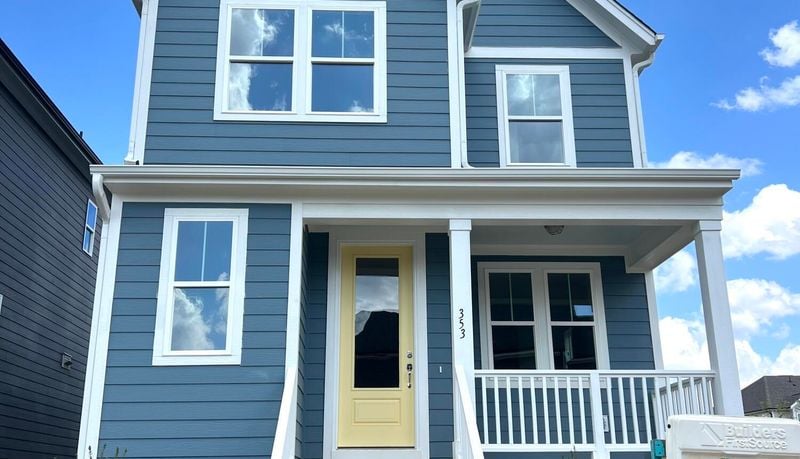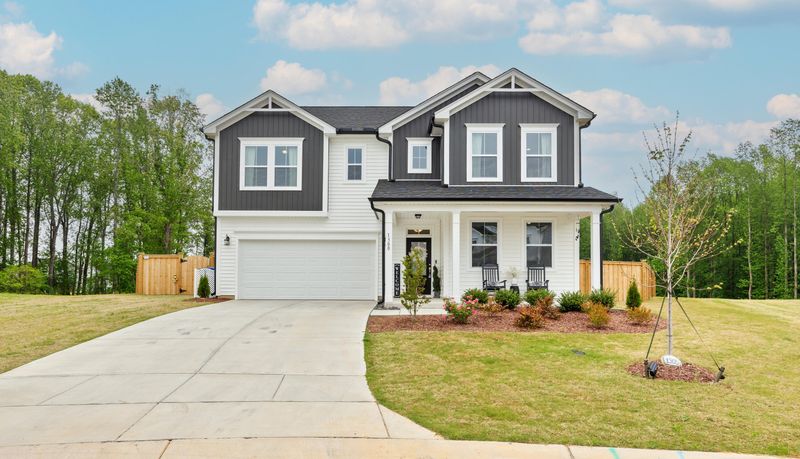Don’t Get Sunk: What To Know About Florida Sinkholes
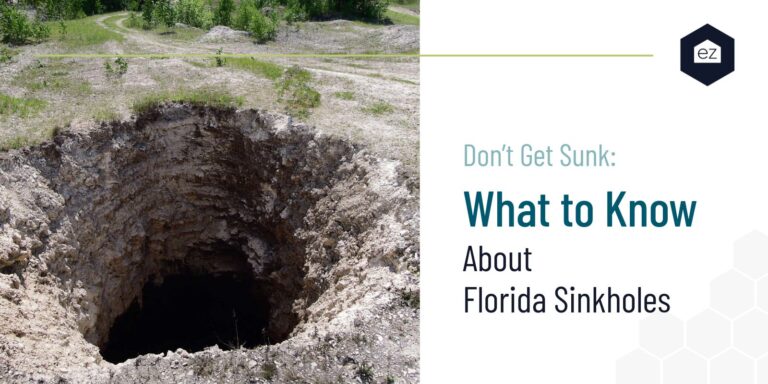
Florida is known for its stunning beaches, theme parks, and interesting people, but it’s also renowned for something less picturesque but equally fascinating – sinkholes. These natural phenomena have garnered global attention due to their potential to swallow whole homes!
Reading that can be nerve-wracking, especially when planning to move to Florida. You likely accounted for the hurricane and flood risk, but now knowing the ground can give away under your home? This article aims to shed light on the science behind sinkholes, why they occur in Florida, and the measures taken to mitigate their impact on local communities and your home.
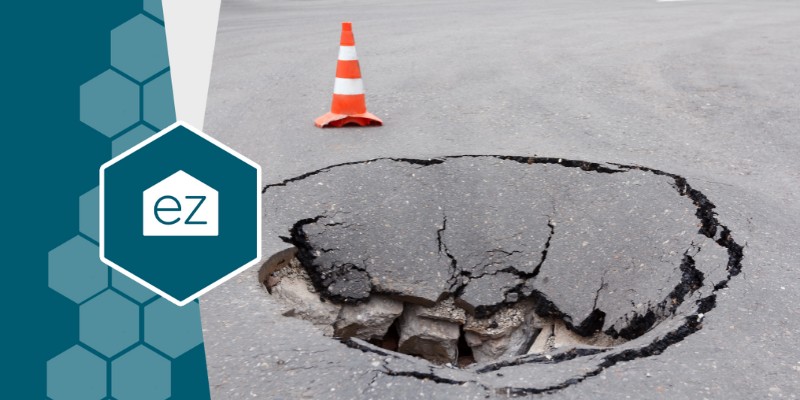
What is a sinkhole?
Sinkholes are more common than you think. It’s a depression or hole in the ground caused when the surface collapses into an underground void. These vary from small pits to massive craters that take out highways, cars, and, yes, entire buildings.
A sinkhole forms through a process known as “subsidence.” It’s the gradual dissolution of a soluble rock, like limestone, by acidic groundwater over centuries. When the rock can no longer support the weight above, it gives way, and voila! A sinkhole suddenly appears!
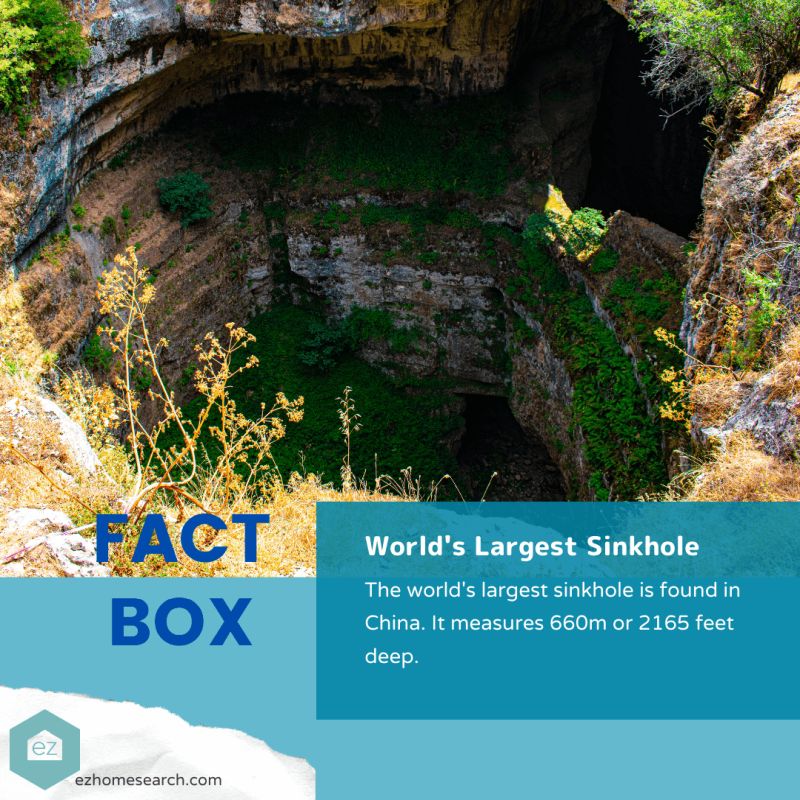
In Florida, sinkholes are often caused by the state’s underground limestone and dolomite layer. Over time, acidic water dissolves the limestone, creating voids that eventually cause the surface layer to cave in.
But Florida isn’t alone in having sinkholes; they are all across the US! Find them in Kentucky–Mammoth Cave’s natural entrances are sinkholes–Missouri, Texas, Ohio, Arizona…pretty much every state has current or past sinkhole activity, even North Dakota!
Why are sinkholes common in Florida?
Florida is a leading state for sinkholes and sinkhole-related damage. It has a high number of sinkholes due to its geological makeup. The underground porous limestone and dolomite are easily dissolved by groundwater. Seeing how Florida is a low-lying state, its groundwater table–the Florida aquifer–can be as shallow as 100 feet, and it averages 54 inches of rain a year, the conditions are ripe for sinkholes.
Usually the natural surface layer can hold up the sediment and rocks above it. Over time, rainwater, which is naturally acidic due to carbon dioxide, seeps into the ground, slowly eroding the limestone and creating hollow spaces. A high rain event–say a slow-moving tropical storm–can speed up the dissolving process.
When the water level in the aquifer drops, it creates an empty space. The surface layer can no longer hold the weight above. And if a home or structure is on the surface when it collapses, it can cause significant damage.
No agency tracks the cost of sinkhole damage, but the US Geological Survey estimates it runs about $300 million per year nationwide. One Florida engineering firm estimated the start of sinkhole damage repair to a home at $10,000 for a small sinkhole. The repair cost will depend on the sinkhole’s size, how it is being formed, and the square footage that is being impacted. Deaths are rare but have been known to happen in sudden collapse events.
Humans factor in sinkhole development
While sinkholes are a natural process, human activities can and do exacerbate their creation. Overdrawing groundwater, for instance, can lead to increased soil compaction and a higher risk of subsidence. This happened in 2010 when 110 sinkholes appeared in one area after a freeze event. Farmers pumped water to protect their plants, but the sudden high volume of removed water caused the sinkholes to appear.
Excessive pumping of groundwater, construction practices, and changes in land use can all contribute to sinkhole formation. That’s an issue in Florida, where the increasing population and drawing down of the Florida aquifer to water golf courses and support the influx of people contribute to more sinkhole activity.
Types of sinkholes
Sinkholes are categorized into three main types: dissolution, cover-subsidence, and cover-collapse sinkholes.
- Dissolution sinkholes form gradually as the rock dissolves, causing the ground to sink over time and often creating ponds or wetlands. For those paying attention to changes in their ground level or settling around the home, these are usually detectable in time, and steps can be taken to mitigate damage.
- In cover-subsidence sinkholes, the overlying sediments–usually sand–gradually settle into the underground cavity, resulting in a gentle depression on the surface. The collapse is less dramatic.
- Cover-collapse sinkholes are the most dramatic and potentially destructive type. These sinkholes form suddenly when the surface layer collapses into the cavity below. These appear after Florida experiences a drought followed by unusually heavy rains or a dramatic draw-down of the aquifer.
Where sinkholes crop up in Florida
There’s some mixed news if you plan to buy a Florida home. The sinkhole risk is concentrated in particular regions of the state. Low-lying South Florida, from Naples across the Everglades to Miami, has the lowest risk, as does the Pensacola metro.
The highest risk of sinkhole or “subsidence” activity is in a stretch of Florida from about Tampa Bay northward, particularly along the I-75 corridor. Central Florida’s slightly higher elevation, dense limestone underlayer, and deep Florida aquifer make it the most prone to sinkholes. The concentration of freshwater springs is a sign of its predilection to ground collapses. The cities of concern include Orlando, Ocala, Crystal River, High Springs, Tallahassee, and Suwannee.
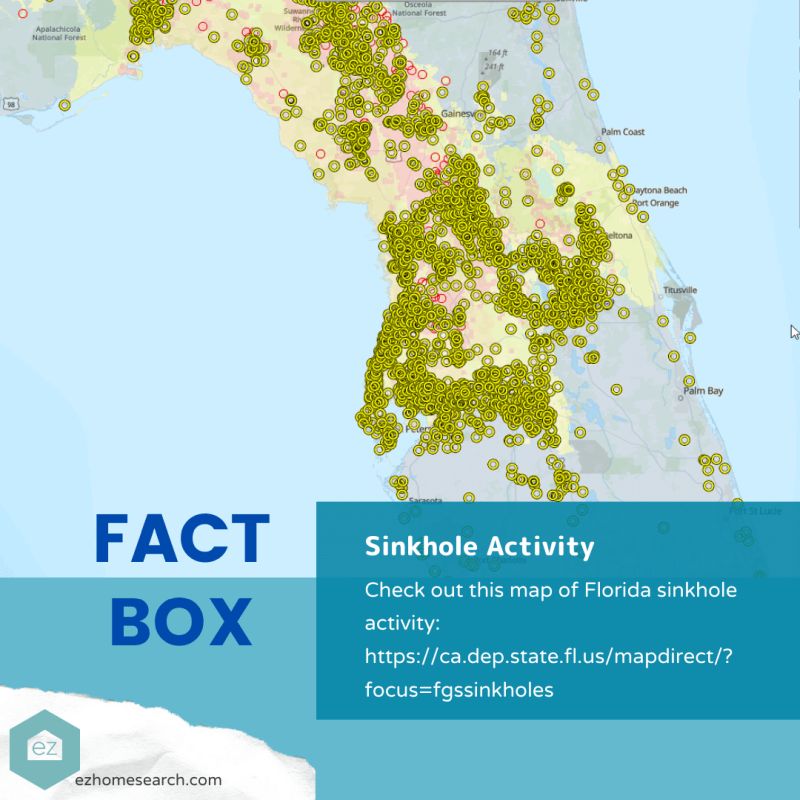
What are the warning signs of a sinkhole?
If you’re looking to buy a property in Florida, note some red flags to look out for when you or your real estate agent tour the home. This is especially true if you’re looking to buy in central Florida. For instance, large trees leaning, sloping floors, and wall cracks can be signs of a sinkhole. If doors and windows no longer open and close correctly or you see depressions on the property, it’s essential to consult a professional to investigate.
Be aware your home inspector is not required to or is typically qualified to conduct sinkhole testing as part of their home inspection; that must be done by a certified geologist.
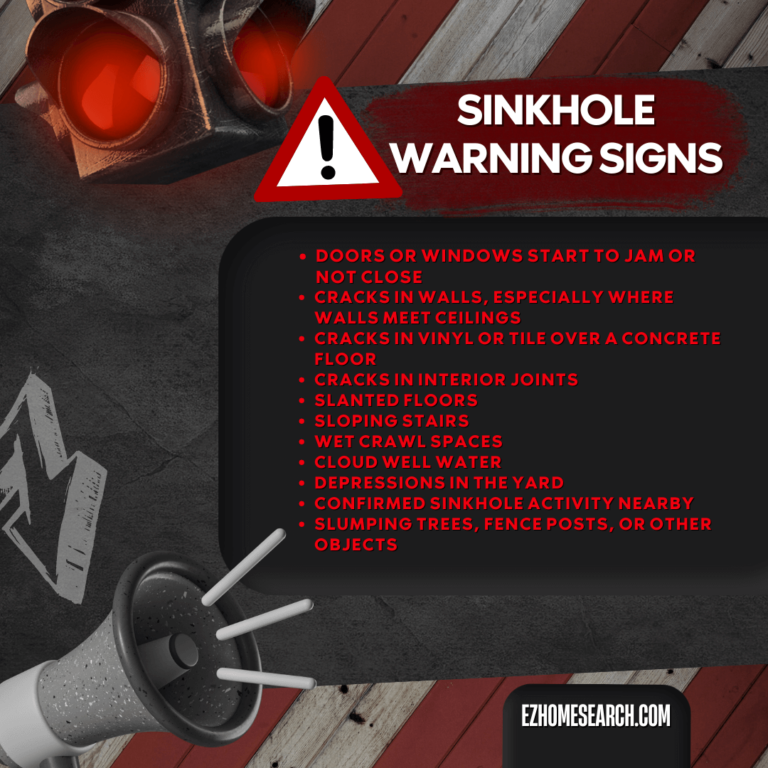
- Doors or windows start to jam or not close
- Cracks in walls, especially where walls meet ceilings
- Cracks in vinyl or tile over a concrete floor
- Cracks in interior joints
- Slanted floors
- Sloping stairs
- Wet Crawl Spaces
- Cloud well water
- Depressions in the yard
- Confirmed sinkhole activity nearby
- Slumping trees, fence posts, or other objects]
What to know about sinkhole coverage in homeowner’s insurance?
Homeowners insurance in Florida doesn’t typically include sinkhole damage; you’ll have to purchase sinkhole coverage separately to cover the catastrophic damage these can cause. However, your home insurer will likely require inspection and testing before writing the policy.
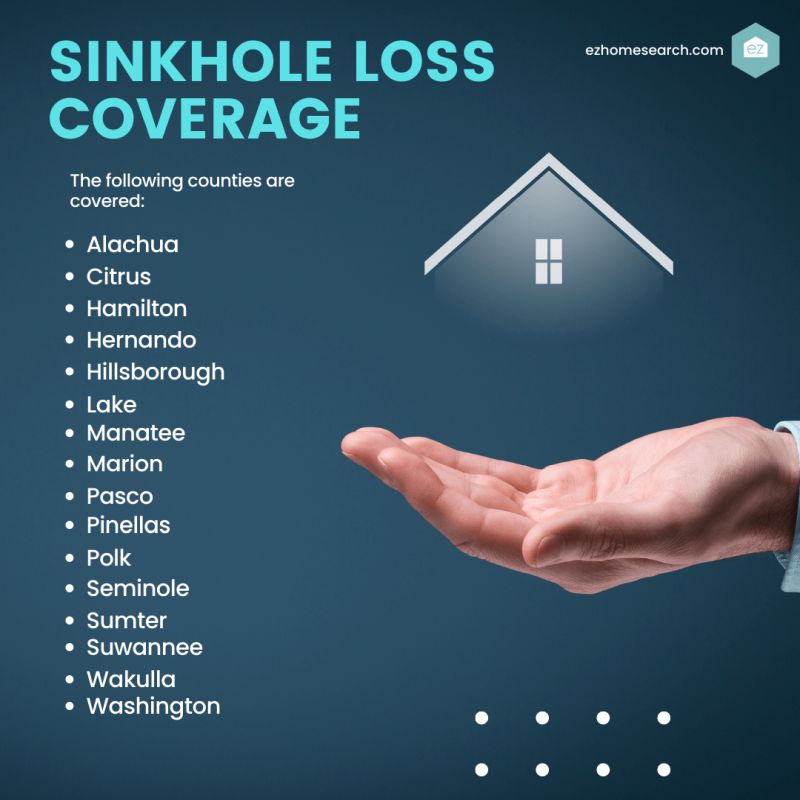
Florida law does require insurers to cover “Catastrophic Ground Cover Collapse,” which includes a sudden ground collapse that results in structural damage or the structure being condemned. It will not cover the repairs from a gradual land sinking like in a dissolution sinkhole.
Protecting your Florida home
Understanding the science behind sinkholes, their classifications, and the geological factors that make Florida susceptible to their formation is crucial for residents and policymakers. Don’t let sinkholes be a deal-breaker in your Florida home search. Consult with realtors and professionals to ensure you’re making an informed decision.




